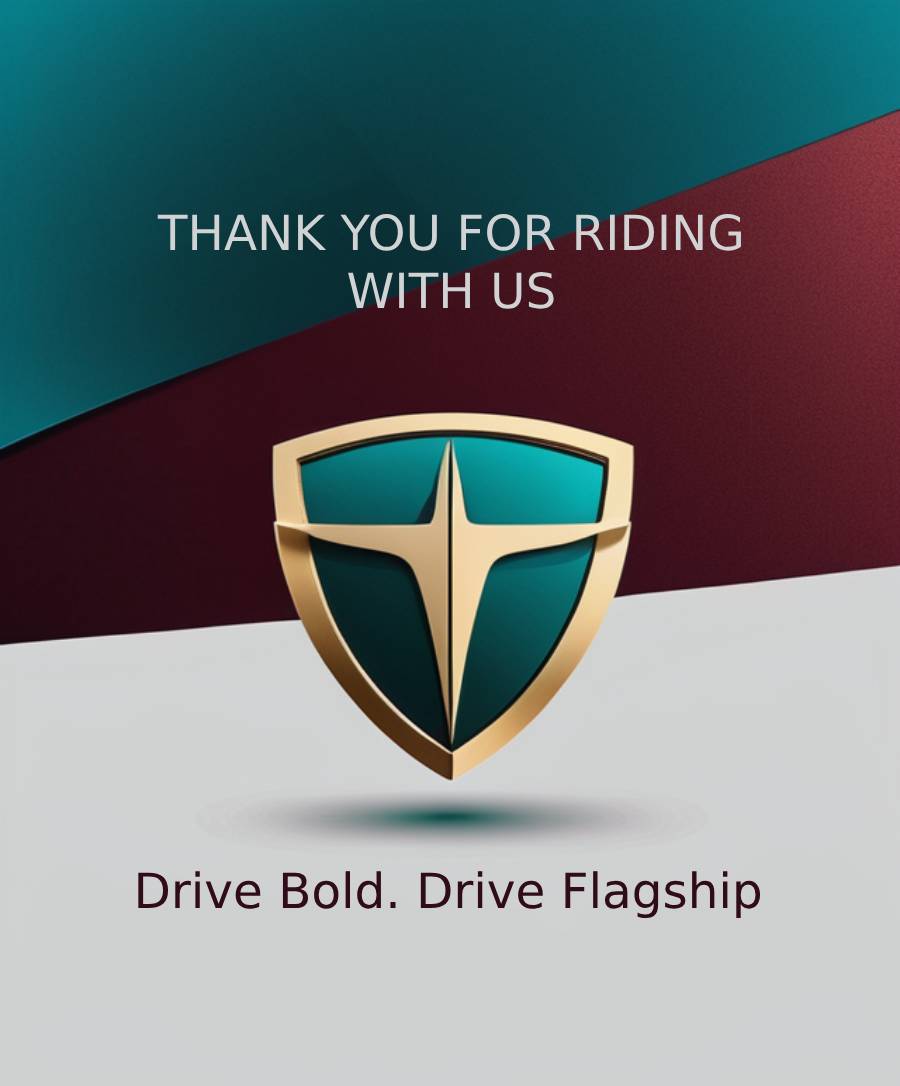Your cart is currently empty!

20 Things To Consider When Buying A Family Car
We’ve talked about the best family cars in 2024, which includes the legendary Honda Pilot and the comfortable Toyota Sienna. Our buddies at CarReviewHQ also shared the top 10 best cars for UK families, such as the Dacia Logan and the Volkswagen Passat. We often recommend the right brand and type of car that will suit your personality. What we haven’t talked about yet are the decisions to make before picking the ideal car. That’s what we hope to achieve with this post. We’re discussing the top 20 things to consider when buying a family car.
Whether you’re into new or used cars, buying a family car is one of the biggest decisions a family will ever make. To help our beloved readers, Flagshipdrive created a simple family car buying formula, which is:
Family Car Score = (0.4 X Safety) + (0.3 X Space) + (0.2 X Fuel Efficiency) + (0.1 X Features), with the score being out of ten. You can read more about how we calculate our scores. Formula aside, a good family car should be reliable, affordable, and most importantly, child-friendly. It’s also important to consider car ownership costs for families and optional features. Having shared our insights, here’s a detailed family car buying guide:
1. Safety Features
Safety is everything, especially when it involves your family – your loved ones. The last thing you want to do is go for a ride with your wife and kids in a car that doesn’t have, say. airbags. That’s an absolute nightmare. Thankfully, this isn’t the 1930s anymore, unless you’re on a first-name basis with Antman.
Every modern car comes with airbags. Some of the top-rated family cars even come standard with things like anti-lock brakes. If you want to take it a step further, look for cars that have advanced safety features like traction control and electronic stability control. Also, check crash-test ratings from reputable sources like the National Highway Traffic Safety Administration (NHTSA). Always look for safe family vehicles. And we can’t stress this enough; A 2.8 out of 5 safety score is not good enough.
2. Size and Seating Capacity
You don’t want to be like those families that somehow manage to fit like five kids in the rear bench seat. Not only is it uncomfortable, it’s also unsafe. Before you buy a car, first consider the size of your family or the size you intend to have soon.
If you have one kid, you can easily settle for a small city car like a Toyota Passo or a Suzuki Alto, although we’re not so keen on the latter. On the other hand, if you have a larger family, you can buy an SUV or a Minivan. Look for options like third-row seating or flexible seating management for that extra room.
3. Budget
Before you think about car makes and models, write out your budget. Make sure you keep your budget thorough, down to the smallest details. If you currently own an automobile, get an accurate appraisal of its worth. Then, figure out how much you will need to contribute to the total cost of the purchase. Keep in mind that a car that’s traded in will cost less compared to a private sale.
4. Financing
To get a good family car bargain, there are a few financial factors to take into account. You must first determine how you are going to pay for the vehicle. There are a few ways you can do it. You may either finance it through a credit union or a bank. Some people opt for a cash payment, but that doesn’t happen as often in Malawi. If you plan to finance the car, make sure you can make the monthly payments. In time. You should also evaluate the loan’s interest rate and terms.
Next, explore your trade-in possibilities. If you wake up one day and think you no longer need the car, you might consider trading it in to help reduce the asking price of the new one.
5. Fuel Efficiency
If you will transport your loved ones, it’s better to consider fuel-efficient family cars. A family should save you money at the pump. So evaluate the car’s fuel efficiency, especially if you plan on taking road trips with it. Keep in mind that a car’s fuel efficiency is affected by the vehicle’s weight, transmission system, aerodynamics, and engine size.
Smaller engines typically consume less fuel than larger engines. The overall weight of the car also influences how much fuel it needs. In this sense, a heavier car will consume a greater quantity of fuel compared to a lighter vehicle.
Aerodynamics also plays a role; a car with a more aerodynamic design will use less fuel. Finally, transmission type can have an impact on fuel efficiency. A manual transmission vehicle will consume less fuel than an automatic transmission vehicle.
For extra fuel efficiency, consider hybrid and electric family cars. As a side benefit: you will contribute to a reduced environmental impact.
6. Cargo Space
Just as important as it is to have enough seats to accommodate all your family members, your car should also have a cargo space that is large enough to accommodate enough luggage for every occupant you’re riding with. Assess the cargo space for strollers, groceries, and, at the very least, luggage for a family camping trip, if you’re into that.
Aside from trunk space, your vehicle should have extra storage compartments in the cabin, like cup holders and cargo nets. If you’re adventurous folks, a roof rack will come in handy for carrying things like kayaks or bicycles.
7. Visibility
Another important point to consider before buying a family car is visibility. The last thing you want is to drive around in a car that has large Batmobile-size pillars. As the driver, you should have a full view of the vehicle. Car visibility means being able to see around the car through windows, mirrors, and, if available, a 360 camera and a backup camera.
It is critical for parking and safety in metropolitan areas, particularly those with other families and children roaming around. Consider your passengers’ point of view as well. Overall, a light and open interior with a lot of windows is the way to go. That said, anything more than that means you’re overdoing it and should have a spaceship license.
8. Entertainment And Connectivity
Many families use their cars for entertainment on long trips. Check for entertainment features like built-in DVDs, USB Ports, and Bluetooth connectivity. Android Auto and Apple CarPlay are great options.
You can also purchase car accessories like rear seat screens (or backrest monitors) from FlagshipDrive.com’s car accessory store. On top of that, check for options like WiFi hotspots.
9. Ease Of Cleaning
Before we expand on this point, have you ever been given a ride by a friend who has a family? If you have, you can understand when we say family cars can be messy. What’s even more tricky is cleaning them. Consider options that have easy-to-clean car interiors, especially fabrics. Go for darker interior colors.
10. Ease Of Entry And Exit
It’s ideal to have a family car that allows all people to enter and exit the vehicle effortlessly. There are so many cars that are easy to get in and out of, including the Honda Odyssey, the Ford Escape, and the Subaru Forester. Just by looking at those vehicles, you can understand that it’s all about the design. Mercedes-Benz has a special Easy Entry and Exit feature that pushes the driver seat back when the ignition is turned off, allowing the driver to enter and exit the car easily.
11. Child Safety Features
Look for features like LATCH (lower anchors and tethers for children). Check reputable online sources for child car seat installation tips or owner manuals.
12. Driving Comfort
Everyone wants comfortable family cars. You can’t drive around in a car that will send you to the chiropractor the next day. We’ve had that experience with the Subaru Van from the 1940s. The seats should be plushy and accommodating. All occupants should have enough headroom, legroom, and shoulder room.
Also, consider ergonomic car features for families, such as climate control, and adjustable seats. On top of that, make sure to opt for cars with good suspension systems for a smooth ride, especially during long trips.
13. Reliability And Reviews
Reliability is among the most important aspects to consider when buying a family car. Not to say that your car won’t break down here and there, but you should look for a car that will give you fewer issues in the long run. The first thing you should do is consider the reputation of the manufacturer.
After that’s done, consider researching the reliability of the car model. You can check the reliability of cars by reading reviews and ratings from other families who have owned the same vehicles. Edmunds and Car Complaints are good sources.
14. Resale Value
Investigate the car’s resale value to ensure that it holds its value well. Higher resale value cars typically have lower depreciation rates. This means that vehicles with a high resale value (hence lower depreciation) hold their worth better over time. When it comes time to sell or trade in the car later on, this can make a difference.
15. History
The history factor generally applies to used cars rather than new ones. When you’ve considered all of the above and begun looking into potential purchases, it’s critical to conduct thorough research, especially when buying a used car. Focus on history and condition over a model year or power output. Request all receipts from the seller, as well as documentation of a comprehensive service history. This info goes a long way.
16. Cost Of Ownership
The cost of owning a car depends on the specific model you get. Toyota cars typically have lower ownership costs, just like Honda and Lexus. As we said earlier, the ideal car ownership costs for families should be low. When calculating the cost of ownership of a car, take into account factors like maintenance, insurance, and repair costs.
17. Test Drive
What kind of drivability are you looking for in a car? If you want to know how a brakes or takes on road curves, then a test drive is just what you need. Test drives are pretty self-explanatory. When you’re taking the car for a test drive, you’re testing the car before you commit to it in the long term. Take the car for a test drive to evaluate its handling and overall driving experience. And there are good and bad ways to test a car. Yes. So be sure to read the test-drive tips.
18. Think About Your Driving Needs (Petrol, Diesel, Hybrid or Electric)
Every family uses their cars differently. As such, think about the way you will use yours. Short-distance drives work best with petrol cars. If you plan on driving at low speeds in an urban setting during city errands, buy a petrol-powered car. On the other hand, diesel-powered vehicles are for long-distance drives.
Diesel-powered cars are not designed for low-speed, low-mileage driving over lengthy periods. Driving diesel cars in those low-speed conditions over time can result in expensive maintenance costs. In such case, you’re best off keeping with modest gasoline power or, if your budget allows, a hybrid or all-electric vehicle.
19. Advanced Driver Assistance Systems (ADAS)
An advanced driver-assistance system (ADAS) incorporates technologies that help drivers operate their vehicles safely. Look for features like adaptive cruise control, lane departure warning, and automatic emergency braking, among other features.
20. Optional extras
The best part about buying a new car is that it allows you to customize it exactly to your liking. This will result in a lengthier delivery time, but parents would be wise to invest in features like parking sensors and, possibly, model-specific child seats. With a used automobile, your options for “optional extras” are restricted to what’s listed in the ads at the moment. Generally speaking, unless it’s safety equipment, it’s not worth waiting to get a feature you wanted when the car was new. Fundamentally, don’t let this factor influence your car selection.
21. Warranty Coverage
The Warranty Coverage in cars should be reasonable. You can check the coverage offered by each manufacturer on their website. And while you’re at it, look for things like coverage duration and mileage. You should look for cars with the most coverage, saving you a lot of money in the long run.
Image Credit: Antoni Shkraba
Author Details

Our Team
Hi there! Welcome to Flagship Drive.
I’m Wilfred Nkhwazi, a passionate car lover from Africa. I created this platform to share expert insights, honest reviews, and a fresh perspective on the latest cars and automotive trends. Let’s hit the road together.
Advertisement

Recent News

